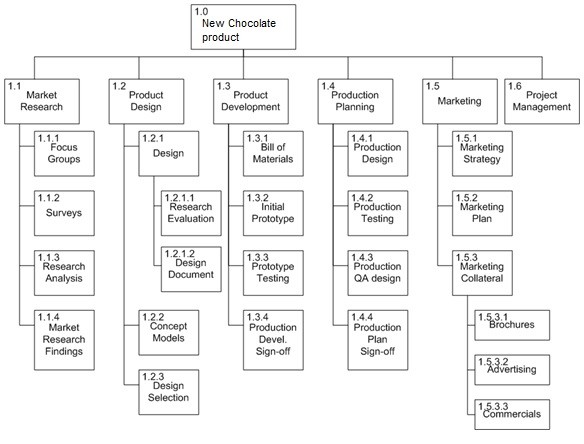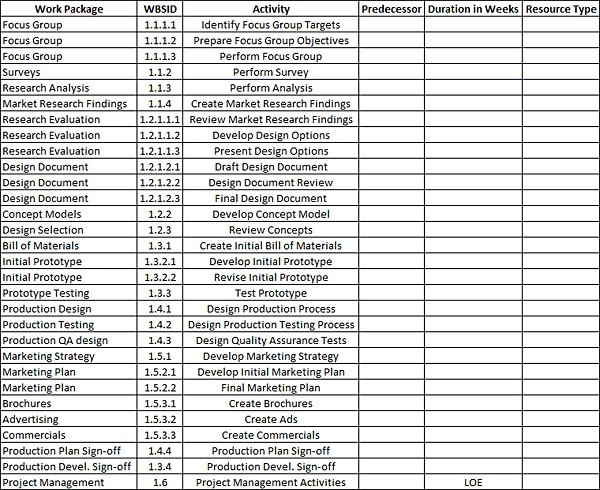Introduction | Get Started | Learn | Practice | Apply | Explore Further | Checkpoint
Project Scheduling
The project schedule communicates what work needs to be performed, which human resources will do the work and the timeframe in which that work needs to be completed. The project schedule should reflect all of the work associated with delivering the project on time. Without a full and complete schedule, the project manager cannot communicate the complete effort, in terms of cost and resources, necessary to deliver the project. Online project management software is an effective way for project managers to track schedules, resources, budgets and project related assets in real time. The project schedule can easily be viewed and updated by team members associated with the project, keeping everyone well informed on the overall project status.
Work Breakdown Structure (WBS)
The building blocks of a schedule start with a Work Breakdown Structure (WBS). The WBS is a hierarchical reflection of all the work in the project, described in terms of deliverables.

A typical approach in developing a WBS is to start at the highest level, with the product of the project. For example, you are assigned as the project manager of a New Product Development project. The new product you are developing is a new household cleaning product. The objective of this product development project is to increase the revenue of the organization by ten percent.
Above is an example of a WBS for this proposed new product. Each level of the WBS is a level of detail created by a process known as decomposition. Decomposition is the breaking down of a single work project into smaller, more manageable components. The elements at the lowest level of the WBS are called tasks. In the example above, brochures, advertising and commercials are all work packages or tasks.
The brochures, advertising and commercials tasks all roll up to a summary level, called a control account; in this example, that control account is identified as Marketing collateral. In Project Insight, one popular project management software package, control accounts are called ‘summary tasks.’ Summary tasks are roll ups of the tasks underneath them.
The decomposition of a schedule will continue at varying rates. In this example, ‘Brochures’ is a task identified at the fourth level of decomposition. The ‘Marketing Plan’ is also a task, but defined at the third level of decomposition. As a project manager, the level of decomposition described is dependent on the extent to which you will need to manage. Most software packages will support as many levels of hierarchy as are required. Each task in the hierarchy will be assigned a single owner and the owner is then expected to manage and report on the work necessary to deliver the task. If a single owner cannot be identified, it is possible that additional decomposition is still required.
Once all the deliverables of the project have been identified, then the tasks will be performed in sequence to create the deliverables. In some cases, these activities are the physical deliverables, but in other cases they are actions that need to be performed. A physical deliverable, for example, might be an image (an actual file) that is needed for the brochure. Listing out each of the tasks to be performed will result in an activity list as demonstrated below.
Product Development Activity List
The work package ‘Focus Group’ actually consists of three (3) separate tasks—’identify focus group targets,’ ‘prepare focus group objectives’ and ‘perform focus group.’ The work package ‘surveys,’ on the other hand, is not broken down into tasks. In the example, it may have been determined that the task owner for the surveys does not need to report on any of the details of that task. As stated earlier, decomposition will continue to the level that is necessary to effectively manage the project.
